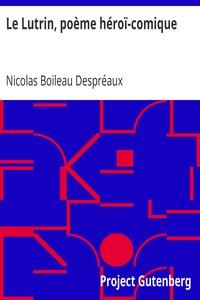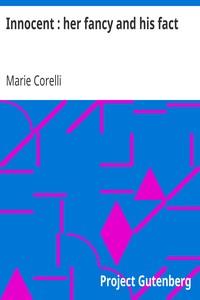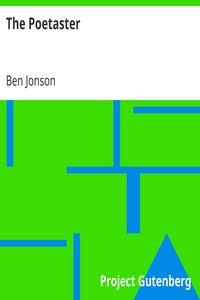|
|
Read this ebook for free! No credit card needed, absolutely nothing to pay.Words: 115147 in 17 pages
This is an ebook sharing website. You can read the uploaded ebooks for free here. No credit cards needed, nothing to pay. If you want to own a digital copy of the ebook, or want to read offline with your favorite ebook-reader, then you can choose to buy and download the ebook.

: The Mabinogion by Schreiber Charlotte Lady Translator - Welsh literature 1100-1400 Translations into English; Mythology Celtic Wales; Tales Wales Fantasy@FreeBooksTue 06 Jun, 2023 Introduction The Lady of the Fountain Peredur the Son of Evrawc Geraint the son of Erbin Kilhwch and Olwen The dream of Rhonabwy Pwyll Prince of Dyved Branwen the daughter of Llyr Manawyddan the son of Llyr Math the son of Mathonwy The dream of Maxen Wledig The story of Lludd and Llevelys Taliesin INTRODUCTION Whilst engaged on the Translations contained in these volumes, and on the Notes appended to the various Tales, I have found myself led unavoidably into a much more extensive course of reading than I had originally contemplated, and one which in great measure bears directly upon the earlier Mediaeval Romance. Before commencing these labours, I was aware, generally, that there existed a connexion between the Welsh Mabinogion and the Romance of the Continent; but as I advanced, I became better acquainted with the closeness and extent of that connexion, its history, and the proofs by which it is supported. At the same time, indeed, I became aware, and still strongly feel, that it is one thing to collect facts, and quite another to classify and draw from them their legitimate conclusions; and though I am loth that what has been collected with some pains, should be entirely thrown away, it is unwillingly, and with diffidence, that I trespass beyond the acknowledged province of a translator. In the twelfth and thirteenth centuries there arose into general notoriety in Europe, a body of "Romance," which in various forms retained its popularity till the Reformation. In it the plot, the incidents, the characters, were almost wholly those of Chivalry, that bond which united the warriors of France, Spain, and Italy, with those of pure Teutonic descent, and embraced more or less firmly all the nations of Europe, excepting only the Slavonic races, not yet risen to power, and the Celts, who had fallen from it. It is not difficult to account for this latter omission. The Celts, driven from the plains into the mountains and islands, preserved their liberty, and hated their oppressors with fierce, and not causeless, hatred. A proud and free people, isolated both in country and language, were not likely to adopt customs which implied brotherhood with their foes. Such being the case, it is remarkable that when the chief romances are examined, the name of many of the heroes and their scenes of action are found to be Celtic, and those of persons and places famous in the traditions of Wales and Brittany. Of this the romances of Ywaine and Gawaine, Sir Perceval de Galles, Eric and Enide, Mort d'Arthur, Sir Lancelot, Sir Tristan, the Graal, &c., may be cited as examples. In some cases a tendency to triads, and other matters of internal evidence, point in the same direction. It may seem difficult to account for this. Although the ancient dominion of the Celts over Europe is not without enduring evidence in the names of the mountains and streams, the great features of a country, yet the loss of their prior language by the great mass of the Celtic nations in Southern Europe , prevents us from clearly seeing, and makes us wonder, how stories, originally embodied in the Celtic dialects of Great Britain and France, could so influence the literature of nations to whom the Celtic languages were utterly unknown. Whence then came these internal marks, and these proper names of persons and places, the features of a story usually of earliest date and least likely to change? These romances were found in England, France, Germany, Norway, Sweden, and even Iceland, as early as the beginning of the thirteenth and end of the twelfth century. The Germans, who propagated them through the nations of the North, derived them certainly from France. Robert Wace published his Anglo-Norman Romance of the Brut d'Angleterre about 1155. Sir Tristan was written in French prose in 1170; and The Chevalier au Lion, Chevalier de l'Ep?e, and Sir Lancelot du Lac, in metrical French, by Chrestien de Troyes, before 1200. From these facts it is to be argued that the further back these romances are traced, the more clearly does it appear that they spread over the Continent from the North-west of France. The older versions, it may be remarked, are far more simple than the later corruptions. In them there is less allusion to the habits and usages of Chivalry, and the Welsh names and elements stand out in stronger relief. It is a great step to be able to trace the stocks of these romances back to Wace, or to his country and age. For Wace's work was not original. He himself, a native of Jersey, appears to have derived much of it from the "Historia Britonum" of Gruffydd ab Arthur, commonly known as "Geoffrey of Monmouth," born 1128, who himself professes to have translated from a British original. It is, however, very possible that Wace may have had access, like Geoffrey, to independent sources of information. In addition to these, is to be mentioned the English version of Sir Tristrem, which Sir Walter Scott considered to be derived from a distinct Celtic source, and not, like the later Amadis, Palmerin, and Lord Berners's Canon of Romance, imported into English literature by translation from the French. For the Auntours of Arthur, recently published by the Camden Society, their Editor, Mr. Robson, seems to hint at a similar claim. Here then are various known channels, by which portions of Welsh and Armoric fiction crossed the Celtic border, and gave rise to the more ornate, and widely-spread romance of the Age of Chivalry. It is not improbable that there may have existed many others. It appears then that a large portion of the stocks of Mediaeval Romance proceeded from Wales. We have next to see in what condition they are still found in that country. Free books android app tbrJar TBR JAR Read Free books online gutenberg More posts by @FreeBooks
: Celtic Literature by Arnold Matthew - Celtic literature History and criticism@FreeBooksTue 06 Jun, 2023

: Le Lutrin poème héroï-comique by Boileau Despr Aux Nicolas - French poetry 17th century FR Poésie@FreeBooksTue 06 Jun, 2023
|
Terms of Use Stock Market News! © gutenberg.org.in2025 All Rights reserved.






